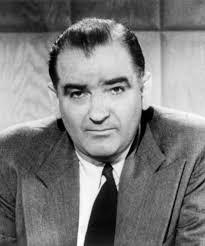Posts Tagged ‘NATURAL RESOURCES COMMITTEE’
2016 PRESIDENTIAL CAMPAIGN, 9/11, ABC NEWS, ADAM KINZINGER, ALEXANDRIA OCASIO-CORTEZ, ALLEN WEST, ALTERNET, AMERICABLOG, ANN COULTER, AP, BABY BOOMER RESISTANCE, BBC, BILL CLINTON, BLOOMBERG NEWS, BUZZFEED, CAPITOL ATTACK, CBS NEWS, CHRISTOPHER S. MURPHY, CNN, COMMUNISM, CROOKS AND LIARS, DAILY KOZ, DEMOCRATS, DONALD TRUMP, DWIGHT D. EISENHOWER, EGYPT, FACEBOOK, FERGUS CULLEN, FIVETHIRTYEIGHT, GAMAL ABDEL NASSER, GEORGE H.W. BUSH, HARPER’S MAGAZINE, HILLARY CLINTON, HOUSE OVERSIGHT AND REFORM COMMITTEE, HUFFINGTON POST, IMPEACHMENT, ISRAEL, JEB LUND, JIMMY CARTER, JOHN F. KENNEDY, JOHN KASICH, JORDAN, JOSEPH MCCARTHY, LIZ CHENEY, LYNDON B. JOHNSON, MARJORIE TAYLOR GREENE, MEDIA MATTERS, MICHAEL HAYDEN, MICHELLE BACHMANN, MIKE PENCE, MITCH MCCONNELL, MOSHE DAYAN, MOTHER JONES, MOVEON, MSNBC, NANCY PELOSI, NATIONAL SECURITY AGENCY, NATURAL RESOURCES COMMITTEE, NBC NEWS, NEW REPUBLIC, NEWSDAY, NEWSWEEK, NPR, OSAMA BIN LADEN, PAUL GOSAR, PAUL RYAN, PBS NEWSHOUR, PHIL GRAMM, PHILIP KLINE, POLITICO, POLITICUSUSA, RAW STORY, REPUBLICAN NATIONAL CONVENTION, REPUBLICANS, REUTERS, RICHARD NIXON, ROGER STONE, ROLLING STONE, RON KLEIN, SALON, Sarah Palin, SEATTLE TIMES, SLATE, SOVIET UNION, TALKING POINTS MEMO, THE ATLANTIC, THE CHICAGO SUN-TIMES, THE CHICAGO TRIBUNE, THE DAILY BEAST, THE DAILY BLOG, THE GUARDIAN, THE HILL, THE HUFFINGTON POST, THE LOS ANGELES TIMES, THE NATION, THE NEW REPUBLIC, THE NEW YORK TIMES, THE NEW YORKER, THE PENTAGON, THE VILLAGE VOICE, THE WASHINGTON POST, THINKPROGRESS, TIME, TIMOTHY MCVEIGH, TRUTHDIG, TRUTHOUT, TWITTER, TWO POLITICAL JUNKIES, U.S. NEWS & WORLD REPORT, UNITED STATES HOUSE OF REPRESENTATIVES, UNITED STATES SECRET SERVICE, UPI, USA TODAY, VIETNAM WAR, WONKETTE, WORLD TRADE CENTER
In Bureaucracy, History, Law, Law Enforcement, Military, Politics, Social commentary on November 26, 2021 at 12:14 am
Having made threats of violence an integral part of his successful 2016 campaign for President, Donald Trump continued to make violence a hallmark of his Presidency.
Throughout his run for President, Trump’s followers chanted, “Lock her up!” at Democratic candidate Hillary Clinton. Yet Clinton has never been tried for a crime, let alone convicted of one.
As President, Trump still encouraged his followers to shout this chant.
On July 2, 2017, Trump tweeted a video showing him punching a man with the CNN logo superimposed on his head during a WWE wrestling match.
And on August 15, 2017, Trump retweeted a cartoon photo of a “Trump Train” running over a CNN reporter.

Summing up Trump’s legacy of hatred, longtime Republican Presidential adviser David Gergen said:
“Trump unleashed the dogs of hatred in this country from the day he declared he was running for president, and they’ve been snarling and barking at each other ever since. It’s just inevitable there are going to be acts of violence that grow out of that.”
Gergen said this on October 24, 2018—the day that pipe bombs were mailed to:
- Former President Barack Obama
- Former President Bill Clinton
- Former First Lady and United States Senator Hillary Clinton
- Former Attorney General Eric Holder
- Congresswoman Maxine Waters
- Former Vice President Joe Biden
- Actor Robert De Niro
- Former CIA Director John Brennan
Trump had brutally and repeatedly attacked all of these intended victims. And the man who sent the bombs—Cesar Sayoc Jr. of Aventura, Florida—had plastered his van with stickers supporting Trump.

Donald Trump
On October 8, 2020, 13 Right-wingers were arrested and charged in a terrorism plot to kidnap Democratic Michigan Governor Gretchen Whitmer. The terrorists intended to overthrow several state governments that they “believe are violating the US Constitution,” including the government of Michigan, according to a federal criminal complaint.
Trump had repeatedly attacked Whitmer for issuing a March 23 stay-at-home order to stem the COVID-19 pandemic in that state.
After losing the 2020 Presidential election, Trump ordered his campaign to file at least 63 lawsuits contesting Joseph Biden’s victory. Upon losing all of these, Trump turned to violence as his last-ditch remedy to stay in office.
On January 6, he incited thousands of his supporters to storm the United States Capitol Building where members of the Senate were counting the electoral votes cast in the election.
The Stormtrumpers’ goal: Stop the ballot counting—and thus maintain Trump in office.
The Stormtrumpers marched to the United States Capitol—and quickly brushed aside Capitol Police.
- Members of the mob attacked police with chemical agents, metal poles and lead pipes.
- At least 140 police officers suffered injuries, including concussions, broken ribs, smashed spinal discs, a lost eye.
- Many lawmakers’ offices were occupied and vandalized—including that of House Speaker Nancy Pelosi, a favorite Right-wing target.
- Lawmakers huddled under desks and behind locked doors, expecting to die any minute.
- More than three hours passed before police—using riot gear, shields and batons—retook control of the Capitol.

Stormtrumpers scaling Capitol Building walls
And Republicans?
Even after being forced to flee for their lives or barricade themselves in House or Senate rooms, Republicans refused to condemn Trump. On January 11, the House voted 232-197 to impeach Trump for incitement of insurrection against the United States government.
Senate Democrats wanted to try Trump while he was still in office. But then-Senate Majority Leader Mitch McConnell (R-KY) refused. On February 13, after a five-day trial, Republicans acquitted Trump by a vote of 57-43, failing 10 votes short of the two-thirds majority needed to convict.
Since then, Republicans such as Paul Gosar (R-AZ) and Marjorie Taylor Greene (R-GA) have recast the attempted coup as a non-violent—even patriotic—event.
“Outright propaganda and lies are being used to unleash the national security state against law-abiding U.S. citizens, especially Trump voters,” Gosar said, condemning the Justice Department’s Investigation of Capitol attackers.
And Greene claims: “January 6 was just a riot at the Capitol and if you think about what our Declaration of Independence says, it says to overthrow tyrants.”
A party—Republican—that has made such a heavy, long-running—and successful—investment in violence is not going to voluntarily turn pacifist.
And a party—Democratic—that has generally behaved like cowards and appeasers toward its sworn enemies isn’t going to survive, let alone preserve democracy.
In May, 1967, Israel faced a similar deadly threat.
On May 22, Egyptian President Gamal Abdel Nasser announced that the Straits of Tiran would be closed to all Israeli shipping. And Nasser mobilized the Egyptian military along the border with Israel.
On May 30, Jordan and Egypt signed a defence pact. The next day, the Iraqi army began deploying troops and armored units in Jordan. They were reinforced by an Egyptian contingent.
Israel was being surrounded—and its sworn enemies were about to attack.
“We are being bullied,” said longtime Israeli soldier Moshe Dayan. “And the only way to handle a bully is to punch him in the face.”
On June 5, Israel struck first, defeating its enemies and securing huge tracts of territory as a defensive barrier.
Democrats have yet to learn Dayan’s lesson. They—and the country—may not turn out to be as fortunate as Israel.
2016 PRESIDENTIAL CAMPAIGN, 9/11, ABC NEWS, ADAM KINZINGER, ALEXANDRIA OCASIO-CORTEZ, ALLEN WEST, ALTERNET, AMERICABLOG, ANN COULTER, AP, BABY BOOMER RESISTANCE, BBC, BILL CLINTON, BLOOMBERG NEWS, BUZZFEED, CAPITOL ATTACK, CBS NEWS, CHRISTOPHER S. MURPHY, CNN, COMMUNISM, CROOKS AND LIARS, DAILY KOZ, DEMOCRATS, DONALD TRUMP, DWIGHT D. EISENHOWER, EGYPT, FACEBOOK, FERGUS CULLEN, FIVETHIRTYEIGHT, GAMAL ABDEL NASSER, GEORGE H.W. BUSH, HARPER’S MAGAZINE, HILLARY CLINTON, HOUSE OVERSIGHT AND REFORM COMMITTEE, HUFFINGTON POST, IMPEACHMENT, ISRAEL, JEB LUND, JIMMY CARTER, JOHN F. KENNEDY, JOHN KASICH, JORDAN, JOSEPH MCCARTHY, LIZ CHENEY, LYNDON B. JOHNSON, MARJORIE TAYLOR GREENE, MEDIA MATTERS, MICHAEL HAYDEN, MICHELLE BACHMANN, MIKE PENCE, MITCH MCCONNELL, MOSHE DAYAN, MOTHER JONES, MOVEON, MSNBC, NANCY PELOSI, NATIONAL SECURITY AGENCY, NATURAL RESOURCES COMMITTEE, NBC NEWS, NEW REPUBLIC, NEWSDAY, NEWSWEEK, NPR, OSAMA BIN LADEN, PAUL GOSAR, PAUL RYAN, PBS NEWSHOUR, PHIL GRAMM, PHILIP KLINE, POLITICO, POLITICUSUSA, RAW STORY, REPUBLICAN NATIONAL CONVENTION, REPUBLICANS, REUTERS, RICHARD NIXON, ROGER STONE, ROLLING STONE, RON KLEIN, SALON, Sarah Palin, SEATTLE TIMES, SLATE, SOVIET UNION, TALKING POINTS MEMO, THE ATLANTIC, THE CHICAGO SUN-TIMES, THE CHICAGO TRIBUNE, THE DAILY BEAST, THE DAILY BLOG, THE GUARDIAN, THE HILL, THE HUFFINGTON POST, THE LOS ANGELES TIMES, THE NATION, THE NEW REPUBLIC, THE NEW YORK TIMES, THE NEW YORKER, THE PENTAGON, THE VILLAGE VOICE, THE WASHINGTON POST, THINKPROGRESS, TIME, TIMOTHY MCVEIGH, TRUTHDIG, TRUTHOUT, TWITTER, TWO POLITICAL JUNKIES, U.S. NEWS & WORLD REPORT, UNITED STATES HOUSE OF REPRESENTATIVES, UNITED STATES SECRET SERVICE, UPI, USA TODAY, VIETNAM WAR, WONKETTE, WORLD TRADE CENTER
In Bureaucracy, History, Law, Law Enforcement, Military, Politics, Social commentary on November 25, 2021 at 12:05 am
With the rise of Donald Trump to Republican standard-bearer in 2015, threats of violence entered the rhetoric—and tactics—of the Republican party.
On March 16, 2016, he warned Republicans that if he didn’t win the GOP nomination in July, his supporters would literally riot:
“I think you’d have riots. I think you would see problems like you’ve never seen before. I think bad things would happen. I really do. I wouldn’t lead it, but I think bad things would happen.”

Donald Trump
Republicans clearly saw this as a threat is undeniable.
Paul Ryan, their Speaker of the House, said on March 17: “Nobody should say such things in my opinion because to even address or hint to violence is unacceptable.”
And Ohio governor and Republican presidential candidate John Kasich chinned in. “Leaders don’t imply violence,” Kasich told “Face the Nation” on March 20. “When he says that there could be riots, that’s inappropriate. I think you understand that, okay? Secondly, while we have our differences and disagreements, we’re Americans. Americans don’t say, ‘Let’s take to the streets and have violence.'”
But threatening his Republican and Democratic opponents with violence played a major role in Donald Trump’s campaign for President.
No other candidate—Republican or Democrat—had ever made such repeated and brutal use of threats of physical assault in pursuing the Presidency.
- Philip Klein, the managing editor of the Washington Examiner, wrote on the eve of the Republican National Convention in July: “Political commentators now routinely talk about the riots that would break out in Cleveland if Trump were denied the nomination, about how his supporters have guns and all hell could break loose, that they would burn everything to the ground. It works to Trump’s advantage to not try too hard to dispel these notions.”
- On August 9, Trump told a rally in Wilmington, North Carolina: “Hillary [Clinton] wants to abolish, essentially abolish, the Second Amendment. If she gets to pick her [Supreme Court] judges, nothing you can do folks. Although the Second Amendment people, maybe there is, I don’t know.”
- “Don’t treat this as a political misstep,” Senator Christopher S. Murphy of Connecticut, who has called for stiffer gun laws, wrote on Twitter. “It’s an assassination threat, seriously upping the possibility of a national tragedy & crisis.”
- “Well, let me say if someone else said that outside of the hall, he’d be in the back of a police wagon now, with the Secret Service questioning him,” said Michael Hayden, former head of the CIA and National Security Agency (NSA).
Threats of this type continued to be made by Trump supporters right up to the day of the election.
- On July 29, Roger Stone, a notorious Right-wing political consultant acting as a Trump strategist, told Breitbart News: “The first thing Trump needs to do is begin talking about [voter fraud] constantly. If there’s voter fraud, this election will be illegitimate, the election of the winner will be illegitimate, we will have a constitutional crisis, widespread civil disobedience, and the government will no longer be the government.”
- At a town hall meeting where Trump’s Vice Presidential nominee Mike Pence appeared, a woman named Rhonda said: “For me personally, if Hillary Clinton gets in, I myself am ready for a revolution.”
- In Cincinnati, a Trump supporter threatened to forcibly remove Clinton from the White House if she won the race: “If she’s in office, I hope we can start a coup. She should be in prison or shot. That’s how I feel about it,”
- Dan Bowman, a 50-year-old contractor, said of Hillary Clinton, the Democratic nominee: “We’re going to have a revolution and take them out of office if that’s what it takes. There’s going to be a lot of bloodshed. But that’s what it’s going to take….I would do whatever I can for my country.”
Even Fergus Cullen, former chairman of the New Hampshire GOP, expressed fear of what might happen if Trump lost the election:

Fergus Cullen
“That’s really scary,” Cullen said, recounting the violence at Trump rallies around the country leading up to the Republican National Convention. “In this country, we’ve always had recriminations after one side loses. But we haven’t had riots. We haven’t had mobs that act out with violence against supporters of the other side.
“There’s no telling what his supporters would be willing to do at the slightest encouragement from their candidate,” he said.
Trump even began encouraging his mostly white supporters to sign up online to be “election observers” to stop “Crooked Hillary from rigging this election.” He urged them to act as poll watchers in “other” [non-white] communities to ensure that things are “on the up and up.”
Many of his supporters promised to do so.
“Trump said to watch your precincts. I’m going to go, for sure,” said Steve Webb, a 61-year-old carpenter from Fairfield, Ohio.
“I’ll look for…well, it’s called racial profiling. Mexicans. Syrians. People who can’t speak American,” he said. “I’m going to go right up behind them. I’ll do everything legally. I want to see if they are accountable. I’m not going to do anything illegal. I’m going to make them a little bit nervous.”
2016 PRESIDENTIAL CAMPAIGN, 9/11, ABC NEWS, ADAM KINZINGER, ALEXANDRIA OCASIO-CORTEZ, ALLEN WEST, ALTERNET, AMERICABLOG, ANN COULTER, AP, BABY BOOMER RESISTANCE, BBC, BILL CLINTON, BLOOMBERG NEWS, BUZZFEED, CAPITOL ATTACK, CBS NEWS, CHRISTOPHER S. MURPHY, CNN, COMMUNISM, CROOKS AND LIARS, DAILY KOZ, DEMOCRATS, DONALD TRUMP, DWIGHT D. EISENHOWER, EGYPT, FACEBOOK, FERGUS CULLEN, FIVETHIRTYEIGHT, GAMAL ABDEL NASSER, GEORGE H.W. BUSH, HARPER’S MAGAZINE, HILLARY CLINTON, HOUSE OVERSIGHT AND REFORM COMMITTEE, HUFFINGTON POST, IMPEACHMENT, ISRAEL, JEB LUND, JIMMY CARTER, JOHN F. KENNEDY, JOHN KASICH, JORDAN, JOSEPH MCCARTHY, LIZ CHENEY, LYNDON B. JOHNSON, MARJORIE TAYLOR GREENE, MEDIA MATTERS, MICHAEL HAYDEN, MICHELLE BACHMANN, MIKE PENCE, MITCH MCCONNELL, MOSHE DAYAN, MOTHER JONES, MOVEON, MSNBC, NANCY PELOSI, NATIONAL SECURITY AGENCY, NATURAL RESOURCES COMMITTEE, NBC NEWS, NEW REPUBLIC, NEWSDAY, NEWSWEEK, NPR, OSAMA BIN LADEN, PAUL GOSAR, PAUL RYAN, PBS NEWSHOUR, PHIL GRAMM, PHILIP KLINE, POLITICO, POLITICUSUSA, RAW STORY, REPUBLICAN NATIONAL CONVENTION, REPUBLICANS, REUTERS, RICHARD NIXON, ROGER STONE, ROLLING STONE, RON KLEIN, SALON, Sarah Palin, SEATTLE TIMES, SLATE, SOVIET UNION, TALKING POINTS MEMO, THE ATLANTIC, THE CHICAGO SUN-TIMES, THE CHICAGO TRIBUNE, THE DAILY BEAST, THE DAILY BLOG, THE GUARDIAN, THE HILL, THE HUFFINGTON POST, THE LOS ANGELES TIMES, THE NATION, THE NEW REPUBLIC, THE NEW YORK TIMES, THE NEW YORKER, THE PENTAGON, THE VILLAGE VOICE, THE WASHINGTON POST, THINKPROGRESS, TIME, TIMOTHY MCVEIGH, TRUTHDIG, TRUTHOUT, TWITTER, TWO POLITICAL JUNKIES, U.S. NEWS & WORLD REPORT, UNITED STATES HOUSE OF REPRESENTATIVES, UNITED STATES SECRET SERVICE, UPI, USA TODAY, VIETNAM WAR, WONKETTE, WORLD TRADE CENTER
In Bureaucracy, History, Law, Law Enforcement, Military, Politics, Social commentary on November 24, 2021 at 12:17 am
Republicans in past decades tried—and often won—elections on the basis of ideology and/or appeals to racism.
During the 1960s and 1970s, the “enemy” was blacks. The key to winning votes of racist whites without appearing racist lay in what Republicans called “the Southern Strategy”—stoking whites’ fears of blacks.
It was this that won Richard Nixon the Presidency in 1968 and 1972 and the White House for George H.W. Bush in 1988.
In a now-infamous 1981 interview, Right-wing political consultant Lee Atwater explained how this worked.
“You start out in 1954 by saying, ‘Nigger, nigger, nigger.’ By 1968 you can’t say ‘nigger’—that hurts you, backfires.
“So you say stuff like, uh, forced busing, states’ rights, and all that stuff, and you’re getting so abstract.
“Now, you’re talking about cutting taxes, and all these things you’re talking about are totally economic things and a byproduct of them is, blacks get hurt worse than whites.…
“’We want to cut this,’ is much more abstract than even the busing thing, uh, and a hell of a lot more abstract than ‘Nigger, nigger.’
“So anyway you look at it, race is coming on the back burner.”

Lee Atwater
Since the end of World War II, Republicans regularly hurled the charge of “treason” against anyone who dared to run against them for office or think other than Republican-approved thoughts.
Republicans had been locked out of the White House from 1933 to 1952, during the administrations of Franklin D. Roosevelt and Harry S. Truman.
Determined to regain the Presidency by any means, they found that attacking the integrity of their fellow Americans a highly effective tactic.
During the 1950s, Wisconsin Senator Joseph R. McCarthy rode a wave of paranoia to national prominence—by attacking the patriotism of anyone who disagreed with him.

Joseph McCarthy
Elected to the Senate in 1946, he rose to national prominence on February 9, 1950, after giving a fiery speech in Wheeling, West Virginia:
“The State Department is infested with communists. I have here in my hand a list of 205—a list of names that were made known to the Secretary of State as being members of the Communist Party and who nevertheless are still working and shaping policy in the State Department.”
Anti-communism as a lever to political advancement sharply accelerated following McCarthy’s speech.
No American—no matter how prominent—was safe from the accusation of being a Communist or a Communist sympathizer—a “Comsymp” or “fellow traveler” in the style of the era.
Republicans rode the issue of anti-Communism to victory from 1948 to 1992.
After holding the White House for eight years under Dwight D. Eisenhower, they lost it in 1960 to John F. Kennedy and again in 1964 to Lyndon B. Johnson.
By 1968, with the nation mired in Vietnam and convulsed by antiwar demonstrations and race riots, Americans turned once more to those who preyed upon their fears and hates.
They elected Richard Nixon, who promised to end the Vietnam war and crack down on “uppity” blacks and antiwar demonstrators.
The same strategy re-elected him in 1972.
After Jimmy Carter won the Presidency in 1976 and lost it in 1980 to Ronald Reagan, Republicans held the White House until 1992.
During the 1970s and 1980s, they continued to accuse their opponents of being devious agents—or at least unwitting pawns—of “the Communist conspiracy.”
Even as late as 1992, President George H.W. Bush and the Republican establishment charged that Arkansas Governor Bill Clinton might be a KGB plant.

George H.W. Bush
Their “evidence”: During his tenure at Oxford University in 1969-70, Clinton had briefly visited Moscow.
Thus, the Republican charged that he might have been “programmed” as a real-life “Manchurian candidate” to become, first, Governor of Arkansas—one of America’s poorest states—and then President.
What made this charge all the more absurd: The Soviet Union had officially dissolved in December, 1991.
Republicans continued to accuse their opponents of being “Communists” and “traitors.” But these charges no longer carried the weight they had while the Soviet Union existed.
Then, on September 11, 2001, Republicans—-and their right-wing supporters—at last found a suitable replacement for the Red Menace.
Two highjacked jetliners slammed into the World Trade Center in New York and one struck the Pentagon in Washington, D.C.

World Trade Center on September 11, 2001
Exit The Red Bogeyman. Enter The Maniacal Muslim.
For several years, fears of Islamic terror carried Republicans to electoral victory—most importantly in 2004, when George W. Bush won re-election as President.
But after the invasion of Iraq in 2003 and the killing of Osama bin Laden in 2011, Americans lost interest in The Maniacal Muslim as a surefire election tactic.
With the rise of Donald Trump to Republican standard-bearer in 2015, threats of violence entered the rhetoric—and tactics—of the Republican party.
For example:
- On March 16, 2016, he warned Republicans that if he didn’t win the GOP nomination in July, his supporters would literally riot: “I think you’d have riots. I think you would see problems like you’ve never seen before. I think bad things would happen. I really do. I wouldn’t lead it, but I think bad things would happen.”
- An NBC reporter summed it up as: “The message to Republicans was clear on [March 16]: ‘Nice convention you got there, shame if something happened to it.'”
2016 PRESIDENTIAL CAMPAIGN, 9/11, ABC NEWS, ADAM KINZINGER, ALEXANDRIA OCASIO-CORTEZ, ALLEN WEST, ALTERNET, AMERICABLOG, ANN COULTER, AP, BABY BOOMER RESISTANCE, BBC, BILL CLINTON, BLOOMBERG NEWS, BUZZFEED, CAPITOL ATTACK, CBS NEWS, CHRISTOPHER S. MURPHY, CNN, COMMUNISM, CROOKS AND LIARS, DAILY KOZ, DEMOCRATS, DONALD TRUMP, DWIGHT D. EISENHOWER, EGYPT, FACEBOOK, FERGUS CULLEN, FIVETHIRTYEIGHT, GAMAL ABDEL NASSER, GEORGE H.W. BUSH, HARPER’S MAGAZINE, HILLARY CLINTON, HOUSE OVERSIGHT AND REFORM COMMITTEE, HUFFINGTON POST, IMPEACHMENT, ISRAEL, JEB LUND, JIMMY CARTER, JOHN F. KENNEDY, JOHN KASICH, JORDAN, JOSEPH MCCARTHY, LIZ CHENEY, LYNDON B. JOHNSON, MARJORIE TAYLOR GREENE, MEDIA MATTERS, MICHAEL HAYDEN, MICHELLE BACHMANN, MIKE PENCE, MITCH MCCONNELL, MOSHE DAYAN, MOTHER JONES, MOVEON, MSNBC, NANCY PELOSI, NATIONAL SECURITY AGENCY, NATURAL RESOURCES COMMITTEE, NBC NEWS, NEW REPUBLIC, NEWSDAY, NEWSWEEK, NPR, OSAMA BIN LADEN, PAUL GOSAR, PAUL RYAN, PBS NEWSHOUR, PHIL GRAMM, PHILIP KLINE, POLITICO, POLITICUSUSA, RAW STORY, REPUBLICAN NATIONAL CONVENTION, REPUBLICANS, REUTERS, RICHARD NIXON, ROGER STONE, ROLLING STONE, RON KLEIN, SALON, Sarah Palin, SEATTLE TIMES, SLATE, SOVIET UNION, TALKING POINTS MEMO, THE ATLANTIC, THE CHICAGO SUN-TIMES, THE CHICAGO TRIBUNE, THE DAILY BEAST, THE DAILY BLOG, THE GUARDIAN, THE HILL, THE HUFFINGTON POST, THE LOS ANGELES TIMES, THE NATION, THE NEW REPUBLIC, THE NEW YORK TIMES, THE NEW YORKER, THE PENTAGON, THE VILLAGE VOICE, THE WASHINGTON POST, THINKPROGRESS, TIME, TIMOTHY MCVEIGH, TRUTHDIG, TRUTHOUT, TWITTER, TWO POLITICAL JUNKIES, U.S. NEWS & WORLD REPORT, UNITED STATES HOUSE OF REPRESENTATIVES, UNITED STATES SECRET SERVICE, UPI, USA TODAY, VIETNAM WAR, WONKETTE, WORLD TRADE CENTER
In Bureaucracy, History, Law, Law Enforcement, Military, Politics, Social commentary on November 23, 2021 at 12:27 am
It was a moment both poignant and prophetic: Representative Alexandria Ocasio-Cortez (D-N.Y.) responding to a brutal virtual attack on her by a fellow member of Congress.
Representative Paul Gosar (R-Ariz.) had tweeted a doctored anime video depicting him killing Ocasio-Cortez and then turning his sword towards President Joseph Biden.

Paul Gosar
As a result, the Democratically-controlled House of Representatives was now meeting to decide if he should be censured over that video.
“What is so hard, what is so hard about saying this is wrong?” asked Ocasio-Cortez. “This is not about me. This is not about Representative Gosar. This is about what we are willing to accept. If you believe that this behavior should not be accepted, then vote yes. It’s really that simple.”

Alexandria Ocasio-Cortez
And the Republican response was equally telling: Of the 213 Republicans serving in the House, only two—Liz Cheney (Wyoming) and Adam Kinzinger (Illinois)—dared to support censure of Gosar.
A censure resolution is the most severe form of punishment in the House, and stripping a member of committee assignments removes a powerful platform to influence legislation and give voice to constituent priorities.
The resolution approved by the House removed Gosar from the House Oversight and Reform Committee, which Ocasio-Cortez also serves on, and the Natural Resources Committee.
“We cannot have a member joking about murdering each other or threatening the President of the United States,” House Speaker Nancy Pelosi said in a floor speech.
“Disguising death threats as a video doesn’t make it less real. It’s a sad day for the House of Representatives, but a necessary day.”

Nancy Pelosi
Before the vote which censured him, Gosar said: “I have said decisively there is no threat in the cartoon other than the threat that immigration poses to our country. And no threat was intended by my staff or me.
“I voluntarily took the cartoon down not because it was itself a threat, but because some thought it was. Out of compassion for those who generally felt offense, I self-censored.”
Yet only minutes after the House voted to censure him, Gosar retweeted the video. He also retweeted Right-wing podcaster Elijah Schaffer’s tweet of the video: “Really well done. We love @DrPaulGosar, don’t we folks?”
This marriage of violence with Right-wing ideology is not new.
Rolling Stone magazine writer Jeb Lund noted in a June 19, 2015 editorial: “The Republican Party has weaponized its supporters, made violence a virtue and, with almost every pronouncement for 50 years, given them an enemy politicized, racialized and indivisible.
“Movement conservatives have fetishized a tendentious and ahistorical reading of the Second Amendment to the point that the Constitution itself somehow paradoxically ‘legitimizes’ an armed insurrection against the government created by it. “
“This is no longer an argument about whether one party’s beliefs are beneficial or harmful, but an attitude that labels leftism so antithetical to the American idea that empowering it on any level is an act of usurpation.”
Increasingly, Republicans have repeatedly aimed violent—-and violence-arousing—-rhetoric at their Democratic opponents. This is not a case of careless language that is simply misinterpreted, with tragic results.
Republicans like Paul Gosar fully understand the constituency they are trying to reach: Those masses of alienated, uneducated Americans who live only for their guns and hardline religious beliefs—and who can be easily manipulated by perceived threats to either.
If a “nutcases” assaults a Democratic politician and misses, then the Republican establishment claims to be shocked—-shocked!—that such a thing could have happened.
And if the attempt proves successful, then Republicans weep crocodile tears for public consumption.

The difference is that, in this case, they rejoice in knowing that Democratic ranks have been thinned and their opponents are even more on the defensive, for fear of the same happening to them.
Consider the following:
- Florida GOP Congressional candidate Allen West, referring to his Democratic opponent, Representative Ron Klein, told Tea Party activists: “You’ve got to make the fellow scared to come out of his house. That’s the only way that you’re going to win. That’s the only way you’re going to get these people’s attention.”
- Representative Michelle Bachmann (R-MINN.) said she wanted her constituents “armed and dangerous” against the Obama administration.
- Former Governor (R-Alaska) Sarah Palin told her supporters: “Get in their face and argue with them. No matter how tough it gets, never retreat, instead RELOAD!”
- Right-wing pundit Ann Coulter: “My only regret with Timothy McVeigh is he did not go to the New York Times building.”
- Senator Phil Gramm (R-TEX.) “We’re going to keep building the party until we’re hunting Democrats with dogs.”
Republicans in past decades tried—and often won—elections on the basis of ideology and/or appeals to racism.
During the 1960s and 1970s, the “enemy” was blacks. The key to winning votes of racist whites without appearing racist lay in what Republicans called “the Southern Strategy”—stoking white fears of blacks.
It was this that won Richard Nixon the Presidency in 1968 and 1972 and the White House for George H.W. Bush in 1988.
In a now-infamous 1981 interview, Right-wing political consultant Lee Atwater explained how this worked.




2016 PRESIDENTIAL CAMPAIGN, 9/11, ABC NEWS, ADAM KINZINGER, ALEXANDRIA OCASIO-CORTEZ, ALLEN WEST, ALTERNET, AMERICABLOG, ANN COULTER, AP, BABY BOOMER RESISTANCE, BBC, BILL CLINTON, BLOOMBERG NEWS, BUZZFEED, CAPITOL ATTACK, CBS NEWS, CHRISTOPHER S. MURPHY, CNN, COMMUNISM, CROOKS AND LIARS, DAILY KOZ, DEMOCRATS, DONALD TRUMP, DWIGHT D. EISENHOWER, EGYPT, FACEBOOK, FERGUS CULLEN, FIVETHIRTYEIGHT, GAMAL ABDEL NASSER, GEORGE H.W. BUSH, HARPER’S MAGAZINE, HILLARY CLINTON, HOUSE OVERSIGHT AND REFORM COMMITTEE, HUFFINGTON POST, IMPEACHMENT, ISRAEL, JEB LUND, JIMMY CARTER, JOHN F. KENNEDY, JOHN KASICH, JORDAN, JOSEPH MCCARTHY, LIZ CHENEY, LYNDON B. JOHNSON, MARJORIE TAYLOR GREENE, MEDIA MATTERS, MICHAEL HAYDEN, MICHELLE BACHMANN, MIKE PENCE, MITCH MCCONNELL, MOSHE DAYAN, MOTHER JONES, MOVEON, MSNBC, NANCY PELOSI, NATIONAL SECURITY AGENCY, NATURAL RESOURCES COMMITTEE, NBC NEWS, NEW REPUBLIC, NEWSDAY, NEWSWEEK, NPR, OSAMA BIN LADEN, PAUL GOSAR, PAUL RYAN, PBS NEWSHOUR, PHIL GRAMM, PHILIP KLINE, POLITICO, POLITICUSUSA, RAW STORY, REPUBLICAN NATIONAL CONVENTION, REPUBLICANS, REUTERS, RICHARD NIXON, ROGER STONE, ROLLING STONE, RON KLEIN, SALON, Sarah Palin, SEATTLE TIMES, SLATE, SOVIET UNION, TALKING POINTS MEMO, THE ATLANTIC, THE CHICAGO SUN-TIMES, THE CHICAGO TRIBUNE, THE DAILY BEAST, THE DAILY BLOG, THE GUARDIAN, THE HILL, THE HUFFINGTON POST, THE LOS ANGELES TIMES, THE NATION, THE NEW REPUBLIC, THE NEW YORK TIMES, THE NEW YORKER, THE PENTAGON, THE VILLAGE VOICE, THE WASHINGTON POST, THINKPROGRESS, TIME, TIMOTHY MCVEIGH, TRUTHDIG, TRUTHOUT, TWITTER, TWO POLITICAL JUNKIES, U.S. NEWS & WORLD REPORT, UNITED STATES HOUSE OF REPRESENTATIVES, UNITED STATES SECRET SERVICE, UPI, USA TODAY, VIETNAM WAR, WONKETTE, WORLD TRADE CENTER
VIOLENCE: IT’S THE REPUBLICAN WAY: PART FOUR (END)
In Bureaucracy, History, Law, Law Enforcement, Military, Politics, Social commentary on November 26, 2021 at 12:14 amHaving made threats of violence an integral part of his successful 2016 campaign for President, Donald Trump continued to make violence a hallmark of his Presidency.
Throughout his run for President, Trump’s followers chanted, “Lock her up!” at Democratic candidate Hillary Clinton. Yet Clinton has never been tried for a crime, let alone convicted of one.
As President, Trump still encouraged his followers to shout this chant.
On July 2, 2017, Trump tweeted a video showing him punching a man with the CNN logo superimposed on his head during a WWE wrestling match.
And on August 15, 2017, Trump retweeted a cartoon photo of a “Trump Train” running over a CNN reporter.
Summing up Trump’s legacy of hatred, longtime Republican Presidential adviser David Gergen said:
“Trump unleashed the dogs of hatred in this country from the day he declared he was running for president, and they’ve been snarling and barking at each other ever since. It’s just inevitable there are going to be acts of violence that grow out of that.”
Gergen said this on October 24, 2018—the day that pipe bombs were mailed to:
Trump had brutally and repeatedly attacked all of these intended victims. And the man who sent the bombs—Cesar Sayoc Jr. of Aventura, Florida—had plastered his van with stickers supporting Trump.
Donald Trump
On October 8, 2020, 13 Right-wingers were arrested and charged in a terrorism plot to kidnap Democratic Michigan Governor Gretchen Whitmer. The terrorists intended to overthrow several state governments that they “believe are violating the US Constitution,” including the government of Michigan, according to a federal criminal complaint.
Trump had repeatedly attacked Whitmer for issuing a March 23 stay-at-home order to stem the COVID-19 pandemic in that state.
After losing the 2020 Presidential election, Trump ordered his campaign to file at least 63 lawsuits contesting Joseph Biden’s victory. Upon losing all of these, Trump turned to violence as his last-ditch remedy to stay in office.
On January 6, he incited thousands of his supporters to storm the United States Capitol Building where members of the Senate were counting the electoral votes cast in the election.
The Stormtrumpers’ goal: Stop the ballot counting—and thus maintain Trump in office.
The Stormtrumpers marched to the United States Capitol—and quickly brushed aside Capitol Police.
Stormtrumpers scaling Capitol Building walls
And Republicans?
Even after being forced to flee for their lives or barricade themselves in House or Senate rooms, Republicans refused to condemn Trump. On January 11, the House voted 232-197 to impeach Trump for incitement of insurrection against the United States government.
Senate Democrats wanted to try Trump while he was still in office. But then-Senate Majority Leader Mitch McConnell (R-KY) refused. On February 13, after a five-day trial, Republicans acquitted Trump by a vote of 57-43, failing 10 votes short of the two-thirds majority needed to convict.
Since then, Republicans such as Paul Gosar (R-AZ) and Marjorie Taylor Greene (R-GA) have recast the attempted coup as a non-violent—even patriotic—event.
“Outright propaganda and lies are being used to unleash the national security state against law-abiding U.S. citizens, especially Trump voters,” Gosar said, condemning the Justice Department’s Investigation of Capitol attackers.
And Greene claims: “January 6 was just a riot at the Capitol and if you think about what our Declaration of Independence says, it says to overthrow tyrants.”
A party—Republican—that has made such a heavy, long-running—and successful—investment in violence is not going to voluntarily turn pacifist.
And a party—Democratic—that has generally behaved like cowards and appeasers toward its sworn enemies isn’t going to survive, let alone preserve democracy.
In May, 1967, Israel faced a similar deadly threat.
On May 22, Egyptian President Gamal Abdel Nasser announced that the Straits of Tiran would be closed to all Israeli shipping. And Nasser mobilized the Egyptian military along the border with Israel.
On May 30, Jordan and Egypt signed a defence pact. The next day, the Iraqi army began deploying troops and armored units in Jordan. They were reinforced by an Egyptian contingent.
Israel was being surrounded—and its sworn enemies were about to attack.
“We are being bullied,” said longtime Israeli soldier Moshe Dayan. “And the only way to handle a bully is to punch him in the face.”
On June 5, Israel struck first, defeating its enemies and securing huge tracts of territory as a defensive barrier.
Democrats have yet to learn Dayan’s lesson. They—and the country—may not turn out to be as fortunate as Israel.
Share this: